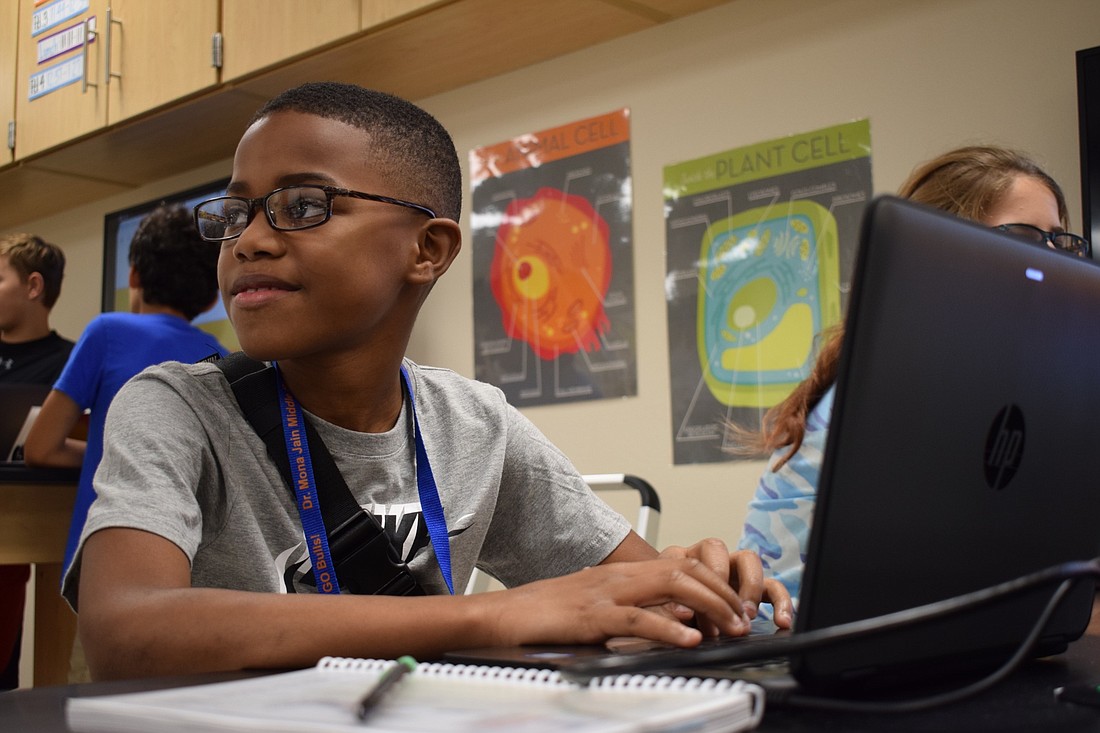- April 18, 2024
-
-
Loading

Loading

Cynthia Saunders, the School District of Manatee County superintendent, said a blended model of e-learning and being on campus could be used when school resumes next semester.
Saunders said three possibilities are being considering: the blended model, all students returning to their classrooms and all students continuing with e-learning.
Manatee County’s students finished the 2019-20 school year by saying goodbye to their teachers through car windows during parades outside the schools rather than in the classroom as a result of the COVID-19 pandemic and the switch to e-learning.
Saunders the district will react accordingly as recommendations and guidelines from the state and from the Centers for Disease Control and Prevention change.
Saunders hopes to have a decision on which option the district will follow in early July.
No matter which option is chosen, students will be allowed to continue online learning if their parents are uncomfortable with them returning to campus.
For now, the district is focused on the blended model because it hasn’t instituted such a system in the past.
The model would lead to 50% of its nearly 50,000 district students in the classroom on the first day of school Aug. 10 while the other half of the students logs into school through Schoology, the online management platform students used during e-learning. Such a system would allow the students, teachers and staff members on campus to follow social distancing guidelines.
Students would alternate their days of e-learning and being in the classroom similar to a block schedule.
A blended system might ease some of the problems with trying to maintain social distancing on school buses.
Using current guidelines, bus seats will be limited to one person instead of the usual two or three. Students will have to register, so the district can assign them to a bus.
Those bus concerns were discussed by School District of Manatee County board members during a workshop May 26.
Besides limiting capacity, other changes also were discussed.
Students will fill the bus from back to front to limit interaction. Before getting on the bus, students will have their temperature taken.
As students get on buses or enter the school from the car rider line, staff members will take their temperature. If a student has a temperature of 100.4 or higher at school, the student will be placed in an isolated area while parents are contacted.
The district is working on purchasing thermometers, hand sanitizer and other health-related items it will need at the start of the year, which could cost the district about $1 million.
Board Member Dave Miner said bus drivers are going to be “playing a significantly greater role in prevention of the spread of the disease.” He demonstrated concern over what happens if a student has a temperature higher than 100.4.
“What do we do?” he said. “Put them in the back of the bus? … The child is there at the bus stop. We don’t want to leave them there.”
Saunders said the district is continuing to brainstorm solutions for challenges like the one Miner posed.
Board Member Charlie Kennedy suggested having another district vehicle available to transport students with fevers to school and placed in isolation if parents aren’t at the bus stop or quickly available.
All the details on how next year will look have not been finalized. The district wants to receive input from parents, teachers, administrators and community members. A survey became available June 1.
No matter how students are educated, Board Member James Golden said the district needs support from parents.
“We need to be counting on parents to join us, not some foolish opposition to what we’re doing because we’re ‘attacking your freedom’ or any stuff like that,” Golden said. “We need you to join us because these buildings must be safe for everybody.”
To take the survey, visit:
http://bitly.ws/8GMk.